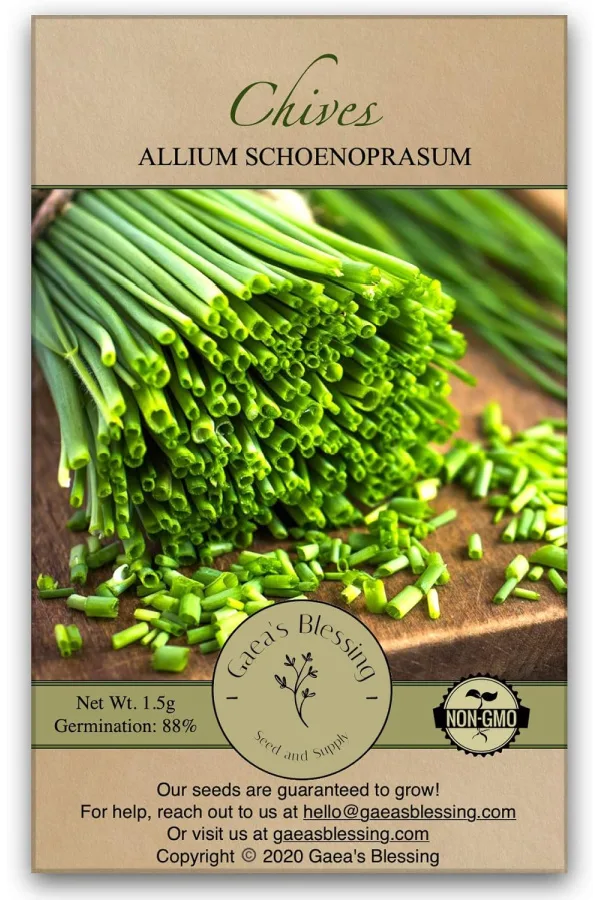Did you know that by simply growing a few companion plants and herbs near your tomato plants – that it can have a huge impact on not only their overall health – but also the size, success, and even flavor of the harvest?
As wild as it might sound, there are actually several herbs and plants that can benefit tomatoes – and not just in the kitchen. Planting specific plants together is a process called companion planting – and can it ever be beneficial for your tomato plants and harvest!
Companion planting creates a positive relationship between the plants that benefit one or both in several different ways. It’s a process that has been used for generations with great success, and it’s an excellent and easy practice to implement in your own garden space. And with tomato plants, herbs are one of the best plants of all to grow to help your tomatoes perform better!

Most herbs have very strong scents. And this scent works extremely well to repel many insects and pests that bother tomato plants. Alternatively, the scent can sometimes work to attract pests away from your tomato plants as a sort of “plant sacrifice.”
Herbs also work to improve the soil around tomato plants. And, if all of that wasn’t enough, certain herbs can also help improve the flavor of tomatoes. It honestly is quite amazing what the process of companion planting can do to benefit tomato plants.
What Herbs To Grow With Tomato Plants & Why
A huge benefit of growing herbs as companion plants is that they take very few nutrients from the soil. This is huge for tomato plants since they are such heavy feeders. When growing tomatoes in containers, you can add a few herb plants right in the same space without worrying about the herbs depleting the nutrients in the soil.
If you prefer not to grow the herbs directly in the ground, you can instead grow them in containers. Just place the containers right next to the tomato plants. As the tomato plants grow, simply move the herbs back as needed.
While the tomatoes won’t get the benefits that come with being planted directly in the same soil as the herbs, they will still get all of the other added companion planting benefits. Now let’s take a look at three of the “best of the best “companion planting herbs to grow next to your tomato plants this year – and how to grow them.
Chives
Chives are a member of the allium family along with onions, leeks, garlic, and shallots. They feature a more delicate onion flavor than mature onions.
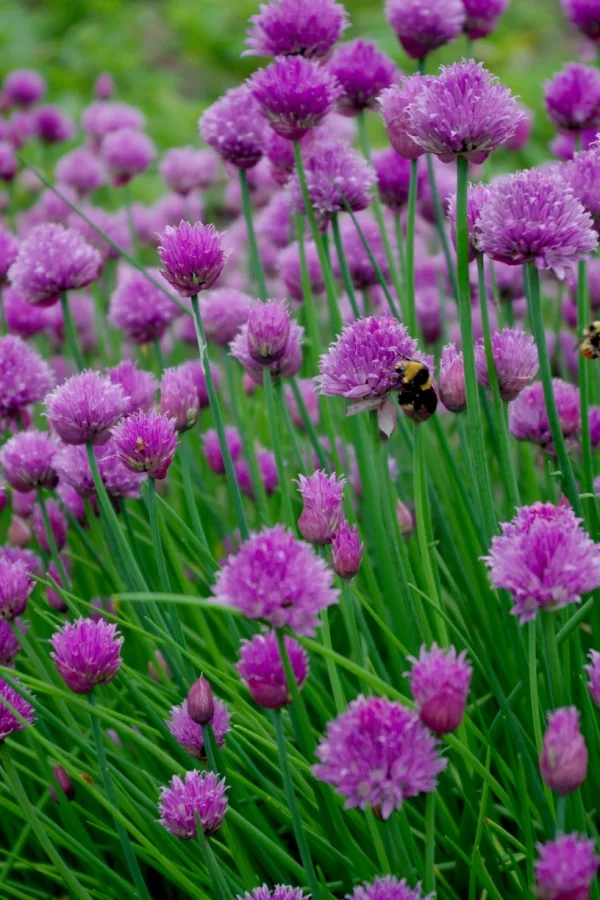
These fast-growing herbs are easy to grow from seed and can be used in hundreds of different ways in your kitchen. With just a single planting, each plant can produce multiple harvests in just one growing season.
But it isn’t just their culinary use that makes chives the perfect companion plant for tomatoes. Chives produce a very strong odor that you can notice the minute you walk by a growing patch.
It’s this strong scent that helps to repel certain pests like mites, nematodes, spider mites, and aphids. In addition, they also help repel slugs and Japanese beetles as well.
Once they are allowed to bloom, chives are perfect for attracting pollinators and predator wasps, further helping to protect tomato plants. Just be aware that chives are a perennial, so they will come back each season.
Planting Chive Seeds
Chive seeds can be planted as soon as the ground can be worked in spring. The seeds germinate quickly, in about 10 to 14 days. Giving them a bit of a head start on growing allows the plants to be a decent size when it’s time to add the tomato transplants to the soil – meaning they can start protecting your tomatoes from day one.
When planting chive seeds, keep in mind the tomato variety’s mature size. As the tomatoes grow and their foliage fills out, they might end up shading out chives that are growing too close. Affiliate Seed Link: Gaea’s Seeds – Chive Non-GMO Seeds
Sow chive seeds about 12 to 18 inches away from the base of where each tomato seedling will be. Alternatively, you can create a row of chives around the perimeter of your growing location such as in a raised box. Thin as needed.
Basil
Not only do tomatoes and basil pair well together in the kitchen, they are also perfect companion plants in the garden, too.
Basil plants feature a rather strong aroma and oily foliage that helps to deter a whole host of common pests that plague tomatoes. From whiteflies and aphids to the dreaded tomato hornworm, basil can help to deter them all.
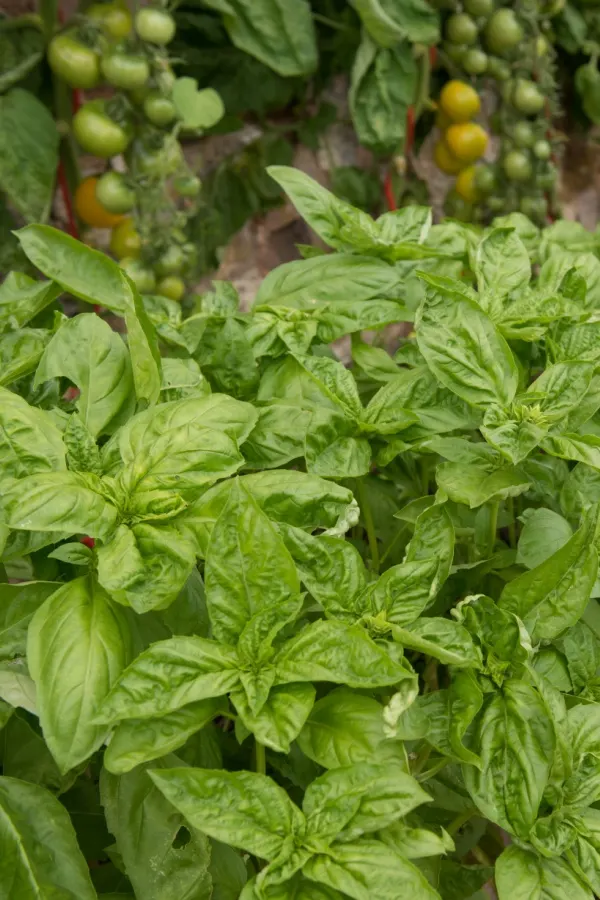
When basil is planted around the root zone of tomato plants, it also helps improve the flavor and health of the growing tomatoes. In return, the tomatoes help provide the basil with some shade from the hot summer sun.
Planting Basil
Basil germinates in around 4 to 10 days, depending on the warmth of the soil. Because of its quick germination, planting the seeds at the time of transplanting tomatoes is ideal. Affiliate Seed Link: Gaea’s Seeds – Sweet Basil Seeds – Non-GMO Large Leaf
Plant 4 to 5 seeds about 12 to 18 inches away from the base of each tomato plant. Once plants are a few inches tall, thin so you have two basil plants per tomato.
Parsley
One of the best “cut and come again” herbs is parsley. You can harvest it and it will continue growing all season long and will continue to produce more leaves.
Unlike chives or Basil, parsley works by helping to draw in and attract beneficial insects. Allowing parsley to go to flower will not only draw in pollinators but also the helpful garden insects.
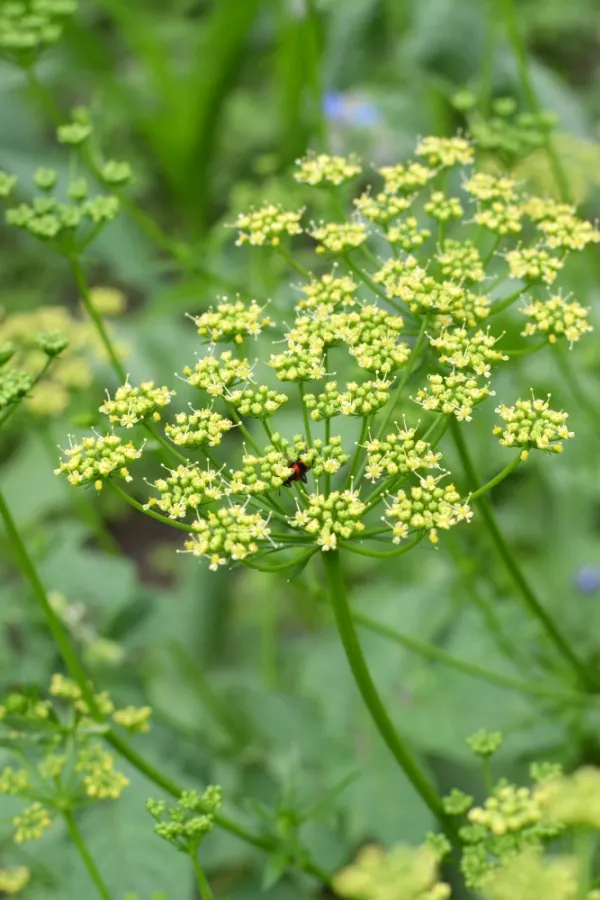
These insects include parasitic wasps, ladybugs, and hoverflies. These insects then feed on several different garden pests including aphids, thrips, and tomato hornworms.
In addition, parsley works as a natural mulch for tomato plants. In return, the tomato foliage helps to provide needed shade for parsley, especially with the hot summer sun.
Planting Parsley
Parsley is a bit slower to germinate than some of the other herbs. Typically, seeds germinate in around 10-30 days but may take up to six weeks. Affiliate Seed Link: Gardeners Basics, Parsley Seeds for Planting, Italian Flat Leaf
Because of this, start parsley indoors around the same time that you start tomato seeds (about six weeks before your last frost date). When it’s time to plant your tomatoes outside, you can also transplant parsley.
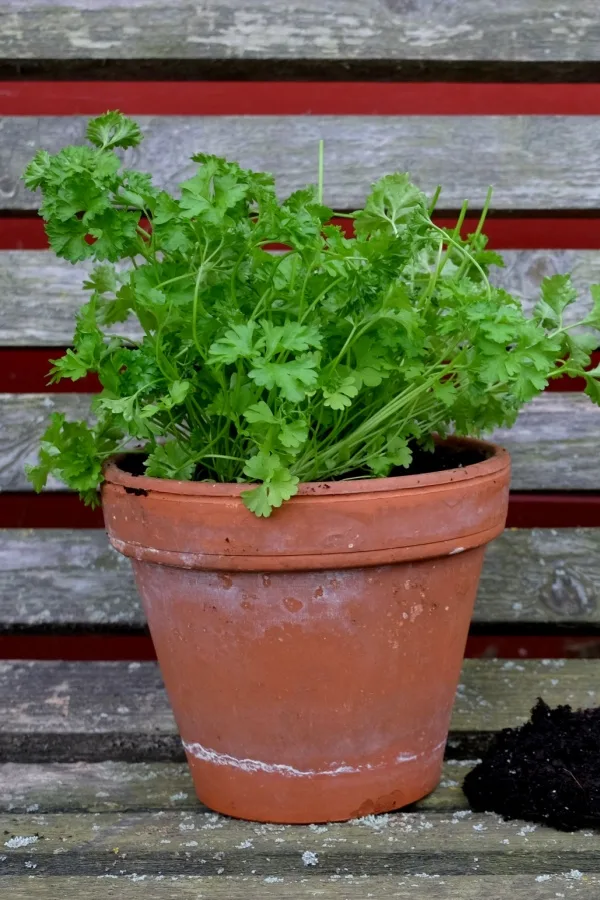
Plant two to three parsley plants per tomato plant. Space the plantings about 12 to 18 inches apart. This allows the tomato foliage to shade out the parsley during the hot summer sun.
Other Non-Herb Companion Plants
Besides chives, basil, and parsley, there are a few other companion plants that grow well with tomatoes.
Nasturtiums is one, but is more of a trap crop. Pests like aphids and whiteflies will be drawn to the nasturtiums instead of the tomatoes.
In addition, nasturtiums create an amazing natural ground cover amongst tomato plants that can help prevent weeds and soil-borne diseases from taking hold of tomato plants. As an added bonus, nasturtium blooms are excellent for drawing in pollinators.
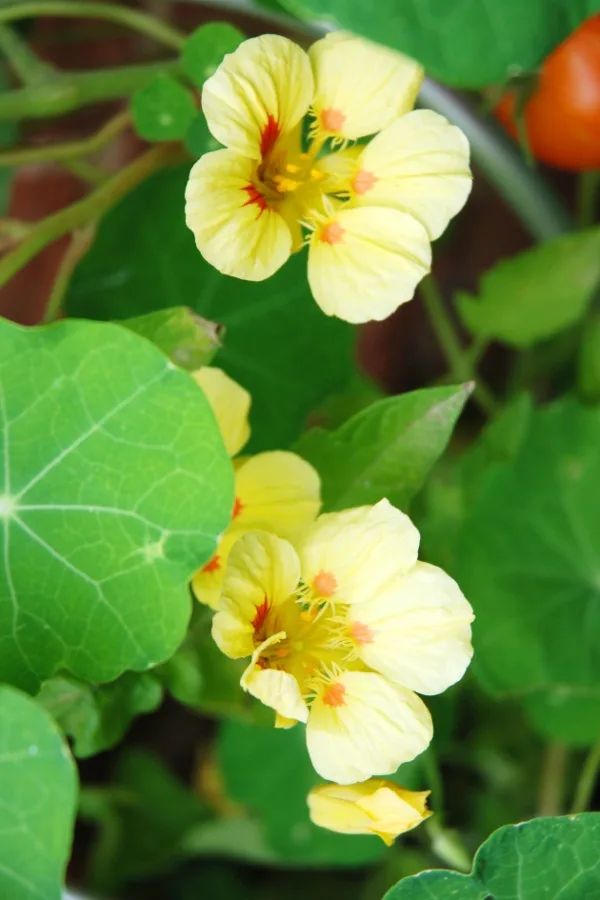
Marigolds are another excellent flower to grow amongst your tomato plants. They help to deter very destructive pests like nematodes, aphids, squash bugs, and tomato hornworms. See: Why To Plant Marigolds With Tomato Plants
And if you are looking for even more companion planting options, see: The Best Companion Plants For Tomatoes – 5 Great Plants To Grow With Tomatoes!
At the same time, marigolds also help to invite beneficial insects to hang out nearby. Obviously the more common pollinators like bees, butterflies, and moths, but also parasitic wasps – One of the best defenders against tomato hornworms. Now that you know what to plant with your tomato plants, be sure to see 4 Vegetable Plants To Never Grow Near Tomatoes!
Here is to growing some of the best herbs and plants around your tomatoes this year – and to having your best crop of tomatoes ever!
I Grow Tomatoes
Follow Our Facebook Page For Even More Great Tomato Growing Tips! I Grow Tomatoes Facebook Page
I Grow Tomatoes is a website created for those who love all things about tomatoes – from planting and growing – to cooking and canning! We publish two articles every week, 52 weeks a year. Sign up today to follow via email! This article may contain affiliate links.

